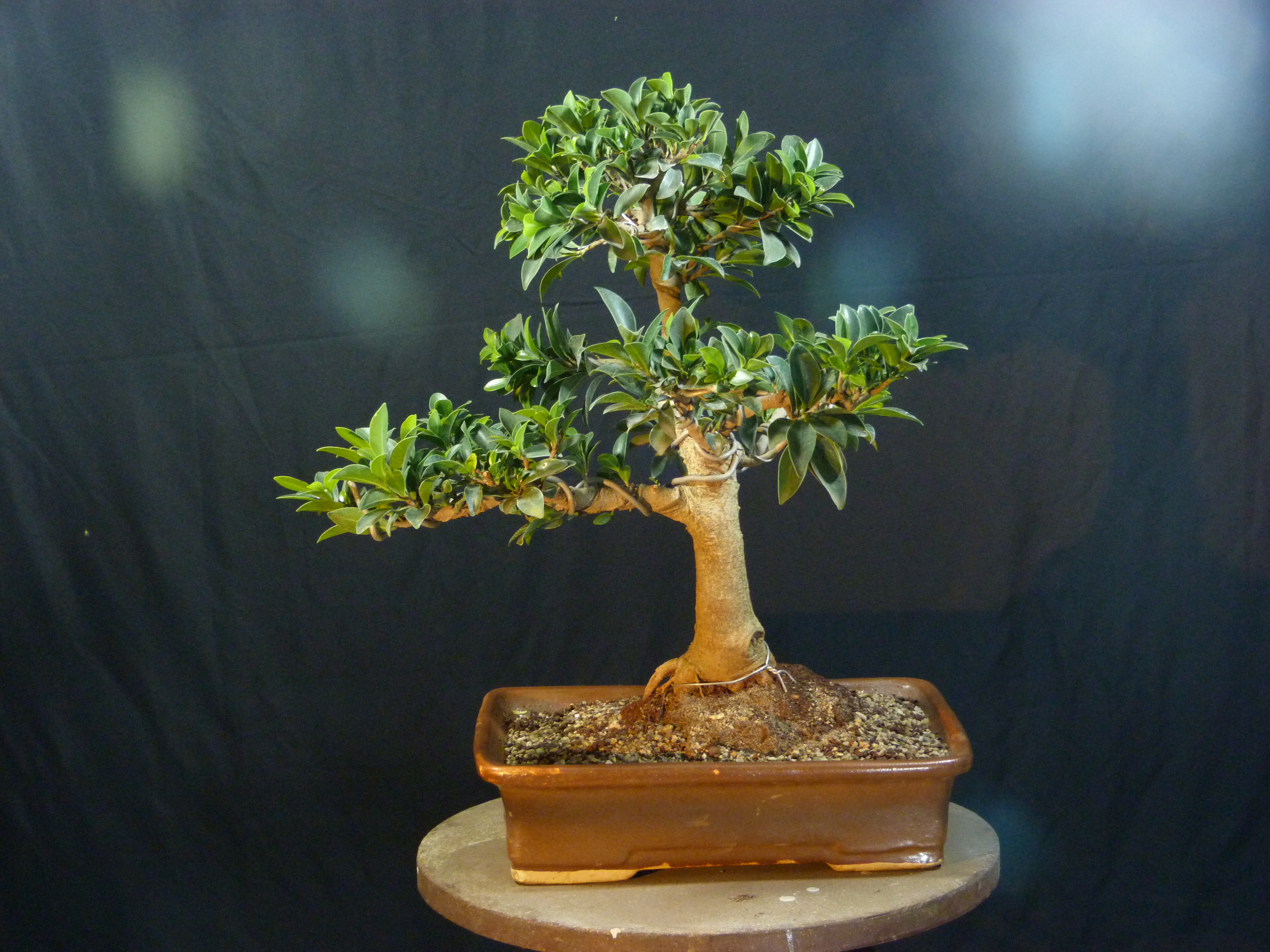p>THE SHAPING PROCESS
(Excerpt from my essay “The Living Art of Bonsai”)
The shaping of a bonsai starts usually only after the trunk of the plant attains some thickness and has some branches. Training can commence even if the plant is in an ordinary pot. Shaping can be categorized into Formative pruning and Definitive pruning.
Formative Pruning
Before shaping a bonsai study the trees’ individuality; look for interesting features such as movement of the trunk, surface rootage, branch positions amp; development, etc.
The following suggestions may be adapted as guidelines for shaping your particular bonsai:
a) Select as the tree’s front the side that reveals the best features of the trunk such as a curve, lean, etc. Visualize the way the plant may look if its inclination is altered or if its branch positions are altered and also as the plant is rotated round its axis. Find the potting angle and the point from which it looks best and from which its branches are seen spreading in all directions. From this position prune away any obviously undesirable branches and try to bring out and highlight the unique characteristics of the tree such trunk line taper, a shapely curve in the trunk, roughness of bark, etc.
b) Keep approximately the bottom third of the plant free of branches. This reveals the structure of the trunk, gives direction to the bonsai and creates an illusion of great age. Choose as the lowest branch (termed as First branch) the longest and thickest one that reaches to the right of left of the selected front. Train it with wire in necessary so that it is inclined slightly forward.
c) While selecting the front, ensure that the plant has a branch located slightly higher up on the trunk than the first branch but at the back (termed as Back branch) and train this also with wire if necessary so that it is visible from the front (approx.. 1 o clock position)
d) To offset the first branch, select a branch positioned slightly higher than the back branch but on the opposite side of the first branch (termed as Second branch) and if necessary train it with wire so that it too sweeps forward. Both the first and second branch taken together would then seem to be welcoming the viewer.
e) The first three branches generally establish the branch structure of a bonsai; the other branches following the inclination of the first branch, all branches creating a spiral of higher, thinner and shorter branches, although if seen from above, no branch emerges from the same degree of the compass along the trunk line and that no branch overlaps another.
Definitive Pruning
Once the plant is pruned initially for basic shape (formative pruning), it should be allowed to develop further by growing for a season or two so that it regains its strength before commencing with pruning to define the shape of the branches and tree (definitive pruning).
While pruning to define the shape, most of the cuts are made just above a leaf which is pointing in the outward and downward direction; the aim of definitive pruning is to achieve a larger and downward inclined spread of the branches. Only such a spread will project the image of an older, more mature tree and define its silhouette.
Pruning in this way results in growth of buds that point in the outward and downward direction as the thrust of growth goes immediately into the lateral shoots just below the cut. This will also avoid ingrowth which is likely to look unsightly and will also avoid overcrowding and eventual dieback of inward growing shoots due to lack of sunlight.
The process of pruning is repeated when sufficient more growth is achieved when it is semi-lignified and the shoots extend to about six/eight leaves. Growth is likely to start from a number of the leaf axils below the cut and with repeated pruning over a few more seasons the branches divide and sub-divide over and over again into a ramified structure.
(Tip: Branches may sometimes have to be thinned out if ramification reaches a stage where further division may so overcrowd the leaf structure that sunlight does not reach to inner shoots resulting in widespread dieback. Removal of dead shoots/branches may also be necessary at some point of time).
The major factor in the directing of bonsai growth is pruning not just of the branches but, even more importantly, of the roots. Even after the tree has reached its designated size and shape it has to be periodically unpotted, root pruned and repotted with fresh soil. Thus, the tree stays the same size and remains healthy through the rejuvenation of the root system.

